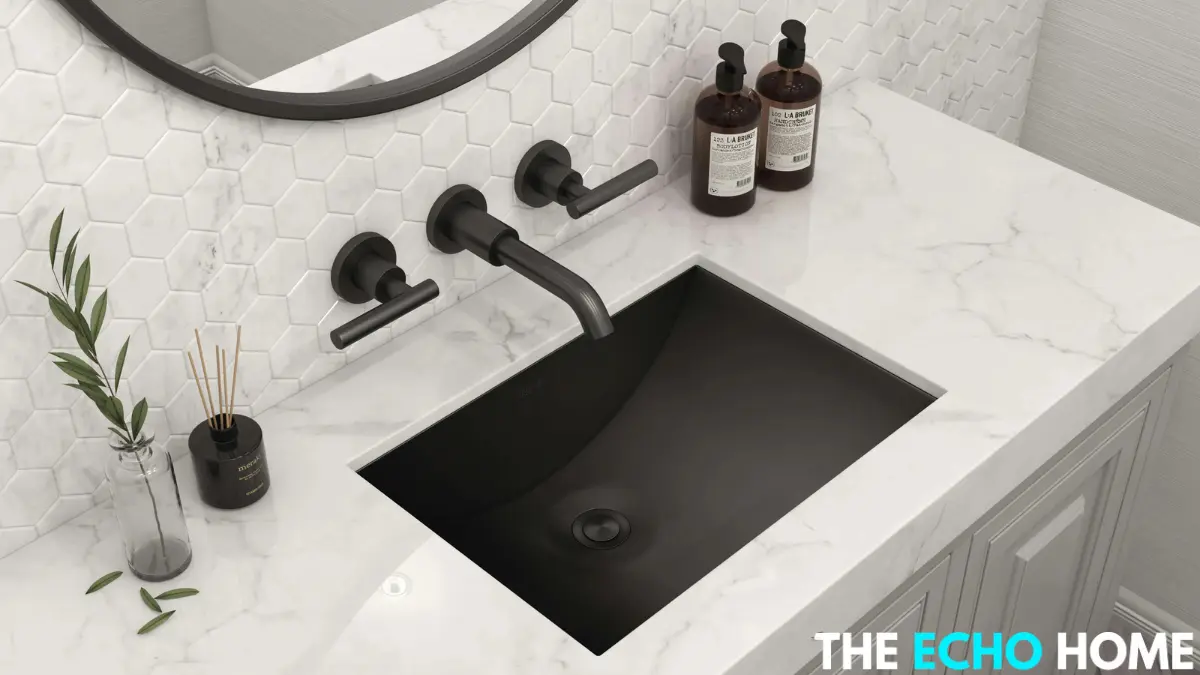Choosing the perfect bathroom sink can significantly elevate the look and functionality of your bathroom. Undermount bathroom sinks have gained immense popularity among the various options available for their sleek design and practical benefits. This guide explores everything you need to know about undermount bathroom sinks, from their features and advantages to installation tips and maintenance.
What is an Undermount Bathroom Sink?
An undermount bathroom sink is a type of sink installed beneath the countertop, creating a seamless and clean look. Unlike drop-in sinks, which sit on top of the counter, undermount sinks are fixed underneath, making the countertop edge visible.
Key Features:
- Flush Finish: The sink sits flush with the countertop, offering a sleek appearance.
- No Rim: The absence of a rim makes cleaning easier and improves hygiene.
- Modern Aesthetic: Popular in contemporary and minimalist bathroom designs.
Advantages of Undermount Bathroom Sinks


- Elegant Appearance
Undermount sinks add a sophisticated, modern touch to any bathroom. Their streamlined design creates a clutter-free, polished look.
- Easy Cleaning
Without the rim found in drop-in sinks, cleaning becomes effortless. You can wipe water and debris directly from the countertop and put them into the sink without obstruction.
- Space-Saving Design
Under-mount sinks save valuable counter space by being installed under the countertop, making them ideal for smaller bathrooms.
- Durability
Most undermount sinks are made from high-quality materials such as porcelain, ceramic, or stainless steel, ensuring longevity and resistance to wear.
- Increased Countertop Usability
The absence of a rim allows for more usable counter space, which is especially beneficial in compact bathrooms.
Types of Undermount Bathroom Sinks
- Materials
- Porcelain and Ceramic: Classic, durable, and easy to clean.
- Stainless Steel: Ideal for modern designs and offers excellent resistance to stains and rust.
- Glass: Adds a touch of elegance and sophistication but requires careful maintenance.
- Natural Stone: Such as marble or granite, these sinks exude luxury but may require more care.
- Shapes and Sizes
- Oval: A popular choice for its soft and versatile design.
- Rectangular: Ideal for contemporary bathrooms, offering a clean and angular look.
- Round: Provides a compact option for smaller spaces.
- Custom Shapes: Custom-shaped sinks are available for unique or high-end bathroom designs.
- Single vs. Double Basin
- Single Basin: Best for small bathrooms or guest bathrooms.
- Double Basin: Ideal for master bathrooms or shared spaces, offering functionality for multiple users.
Choosing the Right Undermount Bathroom Sink
- Consider the Countertop Material
Undermount sinks are best paired with solid-surface countertops like granite, quartz, or marble. These materials provide the strength needed to support the sink’s weight.
- Measure Your Space
Ensure the sink’s dimensions fit well within your countertop and cabinet space. A too-large sink can compromise counter space, while a too-small sink may look disproportionate.
- Match the Style
Choose a sink design and material that complements your bathroom’s overall aesthetic. For example, a porcelain sink works well in traditional bathrooms, while a stainless-steel sink suits modern designs.
- Evaluate Your Needs
Consider who will be using the sink and for what purposes. A durable, stain-resistant sink may be more practical for family bathrooms, while a stylish design may be better suited for guest bathrooms.
- Budget
Undermount sinks vary in price, from affordable options around $100 to high-end models exceeding $1,000. Balance quality with budget to find the best option for your needs.
Installation Process
- Prepare the Countertop
The countertop must have a cutout matching the sink’s dimensions. Solid surface materials are ideal for this type of installation.
- Attach the Sink
- Apply a bead of silicone sealant around the edge of the sink.
- Position the sink beneath the countertop and press it firmly in place.
- Use clamps to hold the sink in position while the adhesive sets.
- Secure with Mounting Hardware
Most undermount sinks come with brackets or mounting clips. These should be installed to provide additional support.
- Connect the Plumbing
Attach the drainpipe and faucet connections. Ensure all seals are tight to prevent leaks.
- Test for Stability
Once installed, check the sink for any movement or leaks before using it.
Note: Professional installation is recommended, especially for heavy sinks or expensive countertops.
Maintenance Tips
- Regular Cleaning
Clean the sink daily with mild soap and water to prevent stains and buildup. Avoid abrasive cleaners that may scratch the surface.
- Check Seals
Periodically inspect the silicone sealant for wear or gaps. Reapply as needed to maintain a watertight seal.
- Avoid Harsh Chemicals
Avoid bleach or strong acids, as these can damage certain sink materials, such as porcelain or natural stone.
- Prevent Scratches
Use a soft sponge or cloth to clean the sink, especially for stainless steel or glass materials.
Undermount Sinks vs. Other Sink Types
- Drop-In Sinks
- Pros: Easier to install, typically more affordable.
- Cons: The rim can collect dirt and reduce counter space.
- Vessel Sinks
- Pros: Unique design, adds a focal point.
- Cons: May require more cleaning and take up counter space.
- Wall-Mounted Sinks
- Pros: It saves floor space and is ideal for small bathrooms.
- Cons: Limited design options and storage potential.
Top Brands for Undermount Bathroom Sinks
- Kohler
Known for their durable and stylish designs, Kohler offers a wide range of undermount sinks suitable for all budgets.
- American Standard
This brand provides high-quality, affordable sinks with excellent durability and functionality.
- Duravit
A luxury brand offering sleek and modern designs, perfect for high-end bathrooms.
- Blanco
Blanco specializes in durable sinks made from premium materials like granite composite.
Frequently Asked Questions (FAQs)
- Are undermount bathroom sinks hard to clean?
No, undermount sinks are easier to clean due to the lack of a rim, which eliminates areas where dirt can accumulate.
- Can I install an undermount sink myself?
While possible for experienced DIYers, professional installation is recommended to ensure proper sealing and support.
- Do undermount sinks require special countertops?
Yes, they are best suited for solid-surface countertops like granite, quartz, or marble.
- How long do undermount sinks last?
With proper care, undermount sinks can last decades, especially those made from durable materials.
- What is the average cost of an undermount bathroom sink?
Prices range from $100 to over $1,000, depending on material, size, and brand.
Conclusion
An undermount bathroom sink is a stylish and functional choice that can enhance the look and usability of your bathroom. With their modern appeal, easy maintenance, and space-saving design, these sinks are a favorite among homeowners and designers alike. By understanding your options, choosing the right sink for your needs, and ensuring proper installation, you can enjoy the benefits of an undermount sink for years to come. Whether renovating your bathroom or building a new one, investing in an undermount sink is a decision you won’t regret.










